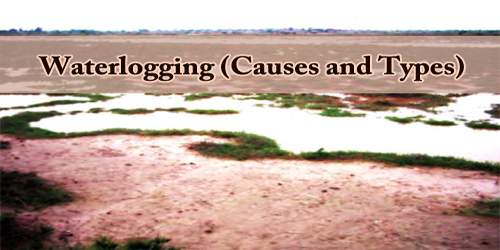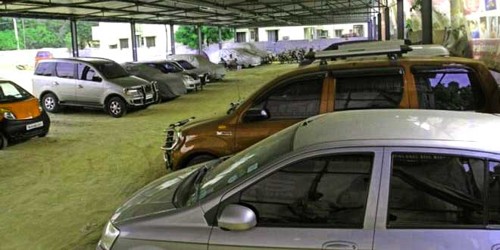Waterlogging is simply the saturation of soil with water, either temporarily or permanently. When there is too much water in an area, the soil is unable to absorb the water as it should ordinarily. It can also happen when the water table rises to the extent that the soil pores in the crop root zone. The result is a restriction in the normal supply of air in the soil, a decline in the levels of oxygen and an increase in the levels of carbon dioxide and ethylene.
In agriculture, various crops need air (specifically, oxygen) to a greater or lesser depth in the soil. Waterlogging of the soil stops air from getting in. How near the water table must be to the surface for the ground to be classed as waterlogged, varies with the purpose in view. A crop’s demand for freedom from waterlogging may vary between seasons of the year, as with the growing of rice (Oryza sativa).
In irrigated agricultural land, waterlogging is often accompanied by soil salinity as waterlogged soils prevent leaching of the salts imported by the irrigation water.
From a gardening point of view, waterlogging is the process whereby the soil blocks off all water and is so hard it stops air getting in and it stops oxygen from getting in.
Waterlogging is serious as it does not have to be characterized by excess water on the surface, meaning it could be a continuing problem even without having to see the water on the surface.
Unfortunately, as each plant is different, there is no universal level of soil oxygen that can identify waterlogged conditions for all plants. Additionally, a plant’s demand for oxygen in its root zone varies with the plant’s stage of growth.
Causes of Waterlogging –
After studying the phenomenon of waterlogging in the light of the hydrologic equation main factors that help in raising the water table may be recognized correctly.
They are:
- Inadequate drainage of over-land run-off increases the rate of percolation and in turn, helps in raising the water table.
- The water from rivers may infiltrate into the soil.
- The seepage of water from earthen canals also adds a significant quantity of water to the underground reservoir continuously.
- Sometimes subsoil does not permit the free flow of subsoil water which may accentuate the process of raising the water table.
- Irrigation water is used to flood the fields. If it is used in excess it may help appreciably in raising the water table. A good drainage facility is very essential.
Different Types of Waterlogging –
- Riverine Flood Waterlogging: It is a type of waterlogging which occurs during the rainy seasons, where floods come to nearby lands from the river because it carries excess water. The water is waterlogged in the land and leads to the death of a number of plants or crops.
- Oceanic Flood Waterlogging: As the name suggests and borrowing from the aforementioned type, oceanic flood waterlogging is characterized by oceanic waters spreading onto nearby lands and causing waterlogging. This particularly can happen when there are extreme weathers affecting the oceans, such as hurricanes and tsunamis.
- Seasonal Waterlogging: Sometimes during the rainy seasons, runoff water might accumulate into the lowlands and depressions, leading to waterlogging.
- Perennial Waterlogging: This happens when deep water or swamps get rainwater and the runoff and seepage water spreads onto neighboring lands, causing perennial waterlogging.
- Sub-soil Waterlogging: It is another type of waterlogging which occurs when water tables rise up high, especially during the rainy seasons, causing waterlogging.
Waterlogging can be a major constraint to plant growth and production and, under certain conditions, will cause plant death. This constraint may not be apparent until the whole soil profile is saturated and water appears on the surface. The department provides landholders with technical information and support on management options to recognize and reduce the impacts of waterlogging.
Information Sources:
















